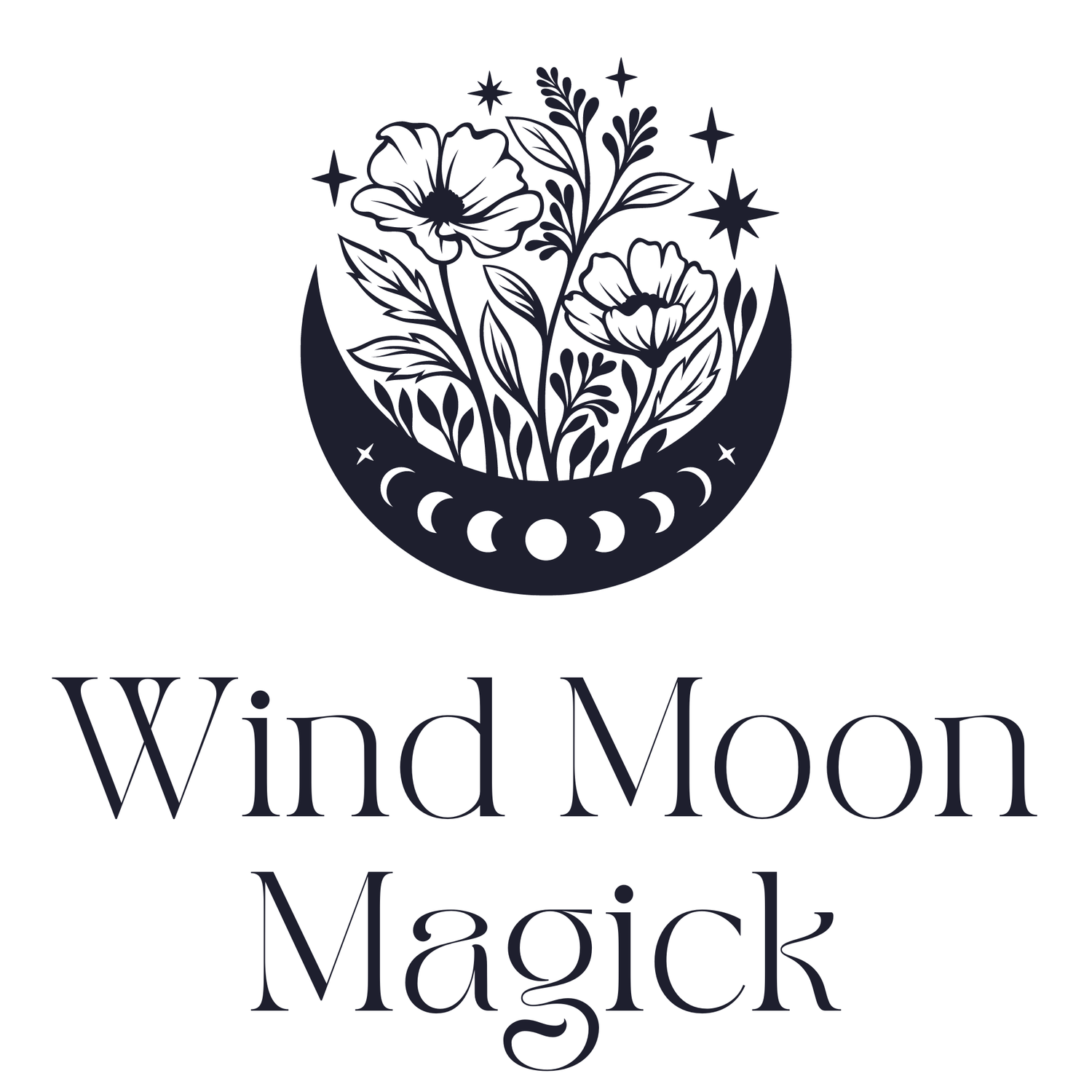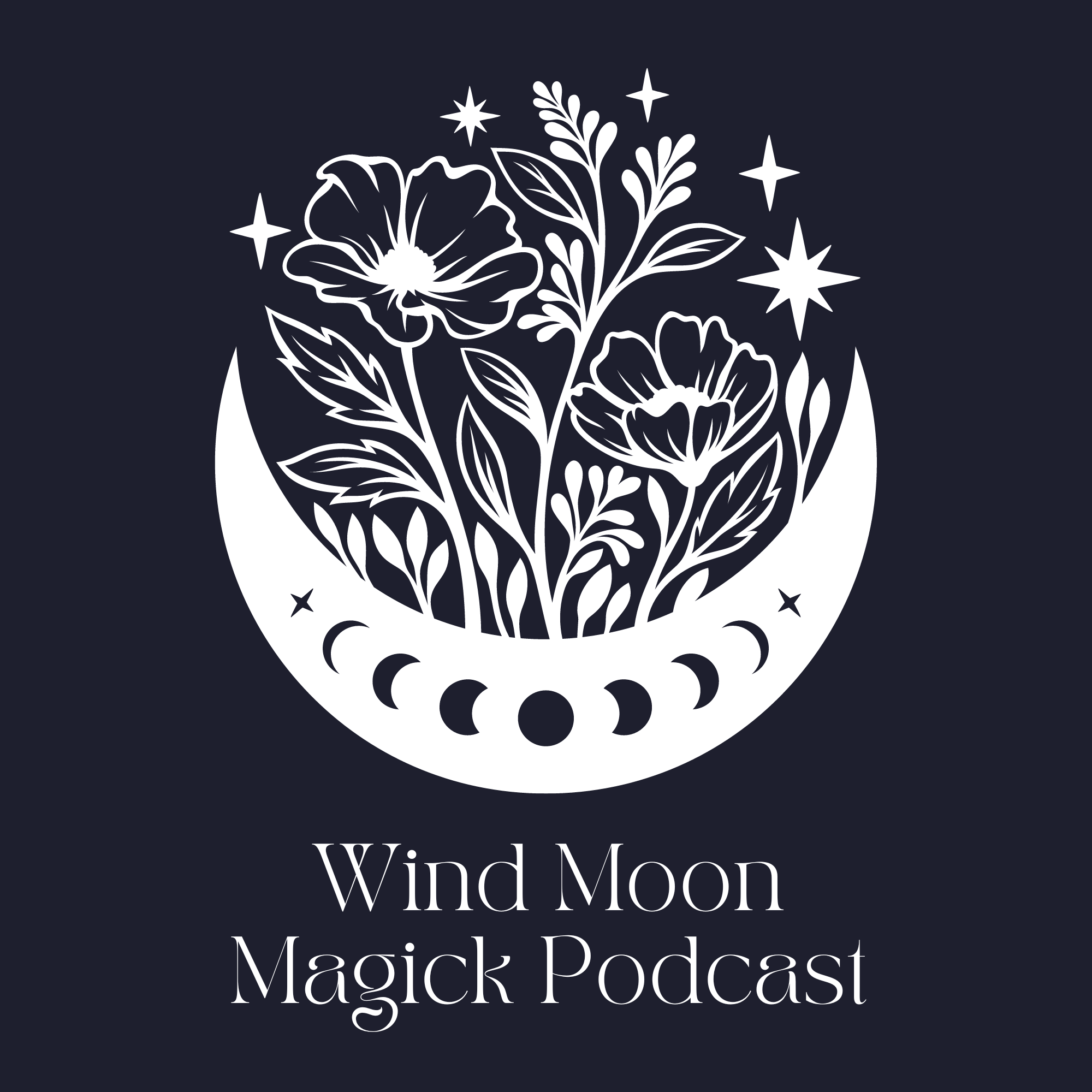Wind Moon Magick Podcast: Episode 5 Mysteries of the Fae: The Good, the Bad, the Scary, and How to Safely Embrace Their Magic
Welcome, dear listeners, to episode 5 of the Wind Moon Magick Podcast. Today, I invite you on a journey deep into the world of the fae.
Immersing oneself in the world of the fae requires adherence to a set of rules and principles. Here are mine:
Embrace Reverence
Seek Consent
Exercise Caution with Gifts
Avoid Names and Conceal Your Own
Honesty and Integrity
Beware the Passage of Time
Prudence in Curiosity
Eat Nothing Offered by the Fae
Carry or Wear Protective Symbols
Maintain Skepticism
Approach the fae with reverence and respect, acknowledging their ancient wisdom. In return, they may be more inclined to share their secrets. Familiarize yourself with faerie folklore, mythology, and their distinct traits. Delve into the diverse types of fairies and their characteristics to deepen your comprehension.
When engaging with the fae, be clear and precise in your intentions. Sincerity and authenticity resonate with them, so ensure your desires align with your true self. Avoid vagueness or indecisiveness in your communication.
Develop a method of communication suited to your local fae. This could involve meditation, divination tools like tarot or pendulum, or simply quiet contemplation and intention.
Clearly define your boundaries—both physical and spiritual.
Demonstrate respect by offering small gifts or tokens to the fae. These gestures should be gifts from you, freely given without expectation or gratitude. Remember, unintentionally creating a contract with these beings must be avoided. Opt for natural items like flowers, crystals, or shiny objects traditionally associated with attracting faeries. Such acts of goodwill draw the fae's attention and may increase the likelihood of their blessings upon your magical endeavors. If you initiate a habit of leaving offerings, ensure you do so regularly to prevent the fae from feeling offended or neglected.
The fae possess an affinity for flowers and gardens. Remarkable, vibrant blooms, particularly in unexpected places, may indicate the fae's visitation. Any well-tended and cherished garden can attract the fae.
During the early morning hours after a clear night, carefully observe the grass, leaves, and petals, especially within groves of trees. If you spot dewdrops sparkling with a magical allure, it could signify that the fae graced the area, leaving their enchanting energy behind.
Pay heed to gentle breezes that carry whispers as if transmitting secret messages. Additionally, ethereal mists or mysterious fog may indicate the fae's presence, shrouding themselves from mortal eyes.
Mischievous by nature, the fae might leave subtle indications of their interactions. Beware of objects mysteriously relocated or misplaced, faint giggles or tinkling laughter, and unexplained happenings or playful pranks within nature.
Animals, particularly those linked to faerie folklore such as rabbits, butterflies, owls, and songbirds, may exhibit peculiar behavior or heightened curiosity when the fae are nearby. Observe their presence andactions, as they may serve as messengers or companions of the fae.
The fae share a deep bond with ancient trees and sacred groves. If you come across an exceptionally old and majestic tree or stumble upon a secluded grove emanating tranquility and magic, it may serve as a portal or gathering place for the fae.
To discover the presence of the fae in nature, find a peaceful and secluded spot near flowing water, preferably during dawn or dusk. Observe your surroundings attentively, remaining still and using your eyes to scan the environment. Be patient and avoid rushing the process. As you connect with the natural world, you may sense the feeling of being watched or experience subtle touches or sounds. Resist the urge to turn around or look for the source. Vocalize your intentions or requests aloud, keeping your voice at a moderate volume. Offer a small gift during each visit but refrain from taking anything from the location. Patience and continued practice will deepen your connection with the fae.
Discovering that your spirit guide is a fae is a rare and special occurrence. When interacting with a fae guide, it is important to proceed with caution and gradually establish trust. Create a sacred space or altar dedicated to your fae guide and express your intentions respectfully. Use meditation and visualization techniques to connect with your guide and be open to any messages or sensations that arise. Pay attention to signs and symbols in your surroundings and utilize divination tools to communicate with your guide. Keep a journal to document your experiences and spend time in nature to strengthen your bond. Incorporate fae-friendly rituals and spells into your practice but maintain boundaries and exercise discernment to ensure a safe relationship. Seek protection from other spirit guides and deities as needed.
Regardless of having a guide or not, the fae realm holds an inherent connection to nature. You may wonder why you would work with the fae, given the inherent risks. Well, the rewards can be equally significant.
Fae beings act as protectors of wildlife and guardians of the natural world. By cultivating a harmonious relationship with the fae, we open ourselves to their wisdom and support, gaining valuable insights into the intricate web of life. The fae may introduce you to specific animal allies who can assist and guide you in your magical workings. These allies offer unique energies, strengths, and attributes to support your spiritual growth and spellcasting.
With their assistance, the fae can help decipher the symbolism and messages embedded within our dreams. They offer insights and guidance, facilitating a deeper comprehension of the hidden meanings and teachings contained within our dream experiences.
Expert symbolists, the fae can guide us in interpreting divinatory tools such as tarot cards, runes, or oracle decks. Their wisdom allows us to uncover deeper layers of meaning and insight.
The fae communicate through synchronicities and subtle signs. During divination sessions, they may offer additional messages and guidance through meaningful coincidences, reaffirming the accuracy and relevance of our divinatory readings.
The fae grant us access to infinite possibilities. Through their wisdom, guidance, and knowledge of herbs, crystals, and elemental forces, our magical practices can flourish. By cultivating a positive relationship with the fae, we align ourselves with the guardians of nature, tapping into their boundless energies to enrich our craft and manifest our deepest desires.
When delving into the fae realm, it is vital to acknowledge the multitude of entities that fall under the umbrella term "fae." Beyond fairies themselves, this enchanting realm encompasses a wide array of creatures, each possessing unique characteristics and fulfilling distinct roles.
To foster meaningful interactions with these mystical beings, it is important to refrain from labeling them. Labels can unintentionally cause offense and disrupt the delicate relationships we seek to build with the fae. Instead, let us focus on understanding and respecting the individual nature of each fae entity we encounter.
A Few Types of Fae:
Brownies, known as house fairies, are benevolent creatures found in Scottish, German, and English folklore. They are attracted to hardworking families and bring good luck when they establish a harmonious connection. Some Brownies may exhibit mischievous behavior and become Boggarts, playing tricks and causing disruptions. Mistreating a Brownie can lead to their transformation into a Boggart, and neglecting a home can distort their nature, potentially exhibiting haunting behaviors.
Pixies, often associated with English folklore, can be found in wooded areas and gardens worldwide. To attract pixies, creating an environment that appeals to them is essential. This includes establishing woodsy areas or cultivating a garden with native flowers.
Devas manifest as bright orbs of light in natural surroundings, especially in wooded areas, and guide witches working with plants. Will o' Wisps are flickering orbs of light seen near bodies of water at night, often appearing in groups. They tend to favor calm waters and may be spotted in grassy hills or woodlands.
There are two types of elves in the fairy kingdom: light elves and dark elves. Dark elves are elusive and reserved, with a deeper connection to the mysterious aspects of life. They excel in shadow work and exploring the human psyche. Light elves are benevolent beings, serving as guardians of the natural world and excelling in the healing arts. They thrive in sunlit environments.
The Seelie Court features benevolent fairies who act as judges and arbiters in faery disputes. They are known for their appreciation of beauty and elegance, with resplendent garments, melodious instruments, and graceful dances.
The Seelie Court and the Unseelie Court represent opposing forces in the fae realm. While some legends depict them in fierce conflict, others suggest a cautious distance due to their inherent disparities. The Unseelie Court, with a darker and foreboding nature, attracts lower fae entities like Boggarts and Bogies. It is associated with ugliness, terror, and reaches its peak activity during autumn, especially around Halloween.
The Unseelie Court is deeply involved in dark magic, engaging with witches in black magic or striking ill-fated bargains with humans, leading to dire consequences.
Nymphs, fascinating creatures from Greek mythology, encompass various types such as tree nymphs, water nymphs, and wood nymphs, each closely associated with their respective natural element and embodying its spirit.
While nymphs possess a mischievous nature, they do not harbor ill intentions toward humans and can form deep connections with them.
Among nymphs, dryads hold a special role as guardians of trees, sharing an intimate bond with their chosen arboreal companions. The well-being of a dryad is intertwined with the life force of its tree, and they go to great lengths to ensure their trees' vitality.
Gnomes, mystical beings originating from Scottish folklore, are believed to inhabit wooded areas worldwide, including parts of the United States. As earth elementals, gnomes have a deep connection with the earth, granting them significant influence over earth-related matters.
For witches practicing earth magic, establishing a harmonious bond with a gnome can enhance their abilities and unlock extraordinary power. Forming a connection with a gnome can provide wisdom and guidance in earth-based magic, herbalism, and natural remedies.
Salamanders are powerful beings often overlooked within the fae realm. As fire elementals, they possess a strong connection to the transformative and passionate energies of fire, making them valuable allies for witches who work with fire in their craft.
Sylphs, air elementals that dwell within the realm of winds and breezes, possess an intimate understanding of the ethereal qualities of air. They can provide invaluable assistance in matters of communication, intellect, inspiration, and mental clarity. Sylphs serve as invaluable allies for witches who work with divination, psychic abilities, and intellectual pursuits.
While European folklore often takes center stage when discussing the fae realm, it is important to recognize that the concept of the fae can be found in diverse cultures and belief systems worldwide. The fae realm extends far beyond boundaries, captivating the imagination and inviting us to explore the enchanting realms beyond our own.
Links
Learn more about the Inner Circle
Tune in to Episode 5 of the Wind Moon Magick Podcast and thank you for joining me today. I invite you to continue exploring the depths of magic and the mystical realms that surround us.


